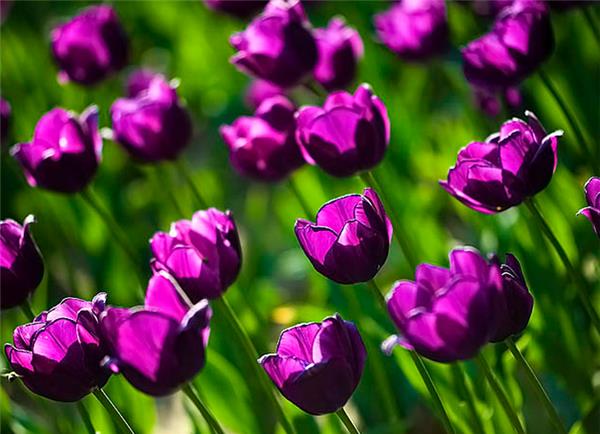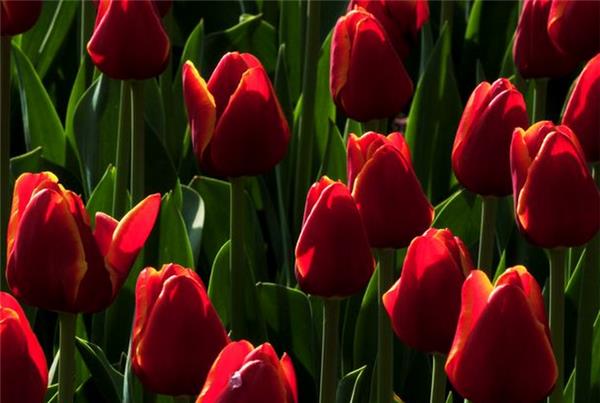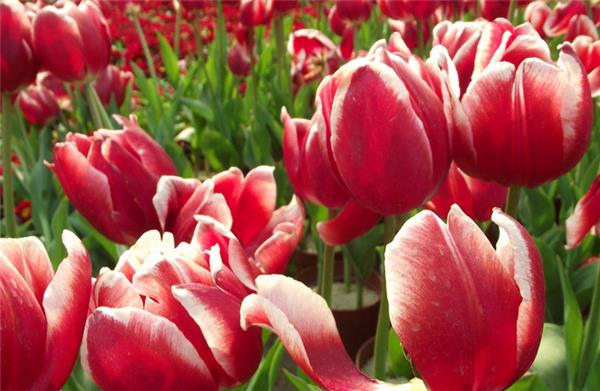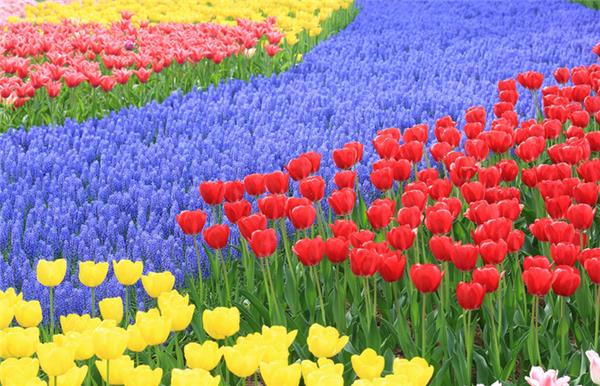[how to raise tulips] cultivation methods of tulips
Tulip is a very famous flower with many varieties and colorful colors, and it has a very good ornamental and embellishment effect. Many people like to plant and beautify their homes at home. There are many colors of tulips, and different colors represent different meanings. How to raise tulips? let's take you to know:

First, how to raise tulips
Tulips are native to the Mediterranean coast and the alpine regions of Central Asia, West Asia and Turkey. Tulips require humid winters and cool and dry summers. Tulips like sunshine, can also grow normally in shade, and have strong cold tolerance. When the temperature drops to-16 ℃ in winter, the bulbs will not be frozen, as long as the temperature is not lower than 8 ℃.
Tulips are generally cultivated in the open field, but now more and more flower lovers choose dwarf varieties of tulips for pot culture, which takes the same time as open field cultivation. Usually, the planting time in North China is from late September to mid-October, and the planting time in the middle and lower reaches of the Yangtze River is before the end of November. The optimum growth temperature of potted tulips is 17 ℃ 20 ℃, and the room temperature should be kept at 10 ℃ 15 min in February. The tulips can be moved to the south window to see more sunlight.

Second, the morphological characteristics of tulips:
Tulip is a perennial herb, bulb oblate conical or oblate oval, about 2 cm long, with brown skin strands, covered with yellowish fibrous skin membrane. Stems and leaves smooth and powdery. Leaves 3-5, long oval-lanceolate or ovate-lanceolate, 10-21 cm long and 1-6.5 m wide; basal ones 2-3, broad, cauline 1-2. Flower stem 6-10 cm high, flowers solitary stem apex, large erect, cup-shaped, base often black-purple. Scape 35-55 cm long; flowers solitary, erect, 5-7.5 cm long; petals 6, Obovate, bright yellow or purplish red, with yellow stripes and spots: stamens 6, free, anthers 0.7-1.3 cm long, inserted at base, filament base broad; pistil 1.7-2.5 cm long, style 3-lobed to base, reflexed. There are cup-shaped, bowl-shaped, egg-shaped, ball-shaped, bell-shaped, funnel-shaped, lily-shaped and so on. There are white, pink, magenta, purple, brown, yellow, orange and so on, different shades, monochrome or complex color.

Third, control the flowering period of tulips
The flowering period of tulips is in the middle and last ten days of July. Full balls are selected and kept in a 10 ℃ cold storage for more than a month. After cold storage, there is a horseshoe-shaped protuberance at the base of the ball, which means that it wants to send roots, and it can be put on the basin at this time.
When cultivated in a greenhouse, the temperature difference should be as small as possible. It can be maintained at 14: 15 ℃ at the beginning, and then rise to 17: 18 ℃. Sudden changes in temperature and lack of water will affect flowering. Lighting can promote early flowering and improve the flower quality of tulips during flowering.

The above content is about the introduction of tulip culture methods, tulip culture technology is also to achieve a state of both hydroponic and soil culture, which also makes many flower lovers more convenient and ornamental when planting tulips at home.
Related
- Wuhan Hospital Iron Tree Blooming Result Was Instantly Frightened by the Gardener Master
- Which variety of camellia is the most fragrant and best? Which one do you like best?
- What is the small blue coat, the breeding methods and matters needing attention of the succulent plant
- Dormancy time and maintenance management of succulent plants during dormancy
- Minas succulent how to raise, Minas succulent plant pictures
- What are the varieties of winter succulent plants
- How to raise succulent plants in twelve rolls? let's take a look at some experience of breeding twelve rolls.
- Attention should be paid to water control for succulent plants during dormant period (winter and summer)
- Watering experience of twelve rolls of succulent plants
- Techniques for fertilizing succulent plants. An article will let you know how to fertilize succulent plants.



